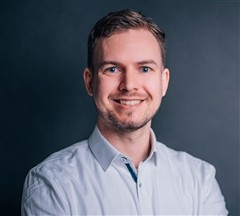- Video Library
- Simon Sonntag, Virtonomy- Accelerating Medical Device Development & Clinical Trials | LSI Europe '22
Simon Sonntag, Virtonomy- Accelerating Medical Device Development & Clinical Trials | LSI Europe '22

Simon Sonntag
Passion for innovation and strong entrepreneurial spirit. 10+ years of experience in life science and medical engineering with a worldwide network with clinicians, KOLs, corporates and universities. 8+ years of experience in leading agile teams, business development and entrepreneurship
Simon Sonntag
Passion for innovation and strong entrepreneurial spirit. 10+ years of experience in life science and medical engineering with a worldwide network with clinicians, KOLs, corporates and universities. 8+ years of experience in leading agile teams, business development and entrepreneurship

17011 Beach Blvd, Suite 500 Huntington Beach, CA 92647
714-847-3540© 2025 Life Science Intelligence, Inc., All Rights Reserved. | Privacy Policy







